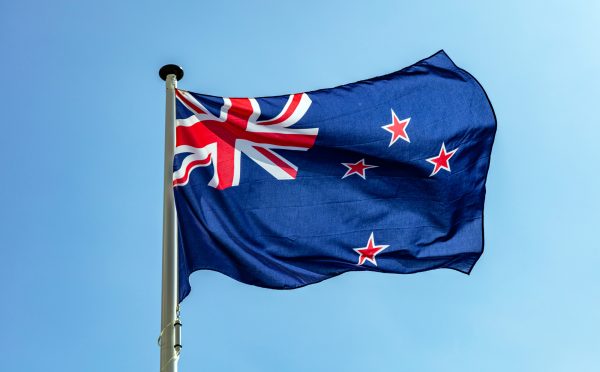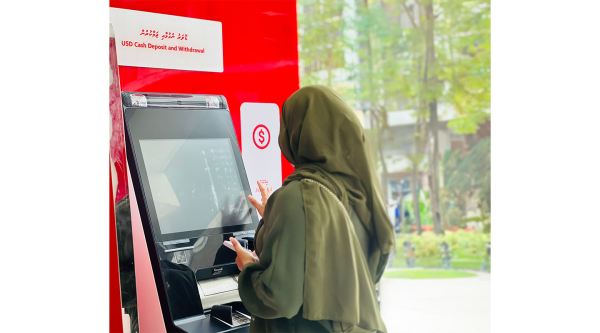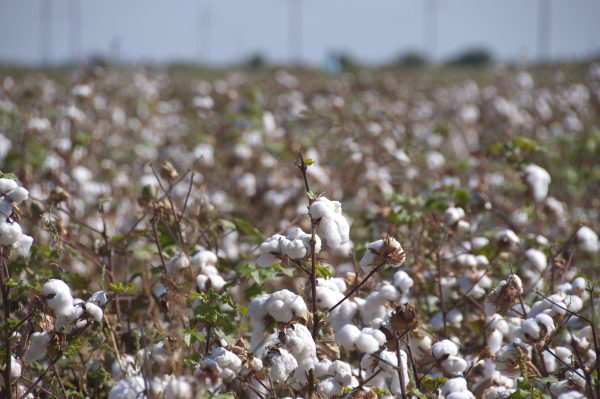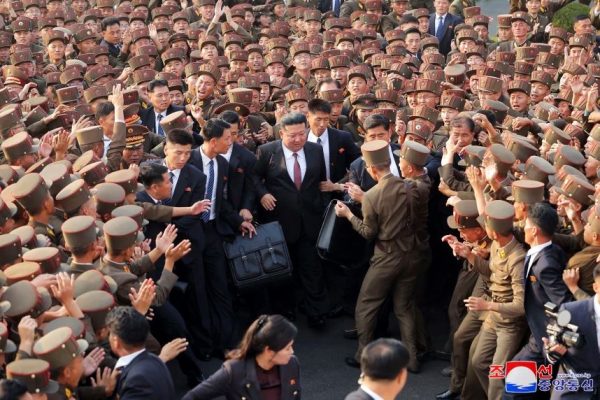New Zealand’s new free trade agreement (FTA) with the Gulf Cooperation Council (GCC) is a major win for both sides. Todd McClay, New Zealand’s trade minister, announced the long-awaited deal on October 31 with his counterparts in Doha, Qatar. It is a remarkable success that is both years in the making and surprisingly sudden; preparatory meetings for the FTA talks began in 2006.
The GCC is made up of six countries that are among the world’s richest: Bahrain, Kuwait, Oman, Qatar, Saudi Arabia, and the United Arab Emirates (UAE). For New Zealand, the Gulf states are both highly lucrative markets in themselves, but also an invaluable gateway to the wider Middle East.
Even without an FTA, the bloc is already New Zealand’s seventh-biggest export market, buying NZ$2.6 billion ($1.6 billion) of exports in the year to June. New Zealand’s dairy and meat products are particularly strong sellers in the Gulf, boosted by an appetite for luxury and a quest for food security in desert climates. The Gulf mainly exports oil-based products to New Zealand in exchange, making for a highly complementary partnership.
While tariffs for selling into the GCC are not high – most goods attract a tariff of just 5 percent – the FTA will carry a cachet worth far more than its face value. The deal with New Zealand is just the third free trade agreement to be agreed by the GCC. And the Gulf’s only two existing FTAs – with Singapore and the European Free Trade Association, or EFTA, a grouping of Iceland, Liechtenstein, Norway, and Switzerland – were signed more than 15 years ago.
New Zealand began its own negotiations with the GCC around the same time as Singapore and EFTA, and initially made rapid progress. After formal negotiations began in 2007, an agreement at the officials’ level was reached just two years later, in October 2009.
The deal was expected to be signed at the ministerial level in the first half of 2010, probably during a planned visit by New Zealand Prime Minister John Key to the Gulf in April of that year. However, Key never made it. After three personnel were killed in a Royal New Zealand Air Force helicopter crash near Wellington on April 25, Anzac Day, the prime minister cut short his overseas trip to attend the funerals at home.
Key’s absence certainly did not help, but it wasn’t the real reason why the FTA ran aground. Saudi Arabia, the biggest of the Gulf states by both area and population, was never on Key’s draft itinerary. Tim Groser, then the New Zealand trade minister, headed to Riyadh and found himself at the receiving end of understandable Saudi disappointment and frustration over New Zealand’s ongoing moratorium on live sheep exports that had been in place since 2003.
A prominent Saudi businessman, Sheikh Hmood Ali Al Khalaf, felt hard done by after investing heavily in a New Zealand farm that focused on live exports to the Gulf. For years, New Zealand had suggested that live exports could eventually resume, but talks between Wellington and Riyadh had gone nowhere.
New Zealand’s relations with influential Saudi Arabia hit an all-time low point after the 2010 troubles. But New Zealand’s foreign minister at the time, Murray McCully, was determined to find a way forward that would make the GCC free trade deal possible. Working with officials, he hatched a plan that became known as the Saudi Arabia Food Security Partnership, or more informally, the “Saudi sheep deal.”
The idea rested on a simple principle: while New Zealand had banned live sheep exports for slaughter, at the time exports were still permitted for breeding. McCully’s plan was to send live sheep to eastern Saudi Arabia for a breeding program on a model farm that would also showcase the best of New Zealand’s agricultural technology and farming practices.
The New Zealand taxpayer funded the deal to the tune of NZ$11.5 million. But unintended consequences, including the deaths of hundreds of lambs in the Saudi desert, were revealed by New Zealand media in 2015. The Saudi sheep deal caused a political firestorm in New Zealand that dragged on for months. Political pressure from opposition parties even led to an official inquiry by the auditor-general, who eventually cleared the foreign minister and others of any wrongdoing in late 2016.
Still, the Saudis appeared greatly impressed by the efforts put in by McCully to improve the relationship – and probably also by the amount of political capital that he was willing to burn on the sheep scheme. Saudi Arabia opened an embassy in Wellington in 2017, reciprocating New Zealand’s own mission in Riyadh, which had opened in 1985. New Zealand’s bilateral relations with Saudi Arabia were firmly on the mend – but the FTA remained tantalizingly out of reach.
This time, relations between the Gulf countries themselves hit the rocks. In 2017, a feud that had been slowly brewing since the 2011 Arab Spring culminated in Saudi Arabia, Bahrain, and the UAE suddenly cutting off all trade and diplomatic ties with fellow GCC member Qatar. The extreme boycott – which saw Qatari nationals expelled from the three other Gulf countries overnight – was not lifted until 2021. Intra-Gulf relations have slowly but steadily healed since then, as evidenced by the decision to conclude the NZ-GCC FTA in Qatar.
After a decade-long hiatus, the formal GCC FTA negotiation process with New Zealand suddenly resumed in March 2022. But even as recently as last year, a free trade agreement with the GCC still seemed like a more long-term goal, judging from the non-committal signals coming out of Riyadh when New Zealand’s then-Trade Minister Damien O’Connor visited the GCC Secretariat in August 2023.
Meanwhile, with progress on the GCC deal seemingly deadlocked, New Zealand had become more open to other options. In late 2021, the UAE invited New Zealand to negotiate a bilateral Comprehensive Economic Partnership Agreement (CEPA). New Zealand initially demurred, worried that a side-agreement with the UAE would upset the wider GCC and particularly Saudi Arabia.
Still, the CEPA was attractive because it would at least deliver FTA-like benefits, as well as expanded cooperation in other areas such as investment, with a powerful GCC member. The UAE remains New Zealand’s biggest export market in the Gulf, although Saudi Arabia is not far behind. After rapidly signing CEPAs with countries ranging from India to Israel, the UAE concluded negotiations on a CEPA with New Zealand in September of this year.
Behind the scenes, Abu Dhabi’s new CEPA strategy clearly became a catalyst for reviving the wider GCC FTA process. The UAE ignited a desire for greater progress among the other five fiercely competitive GCC members. They did not want, and could not afford, to be left behind in the race for new trade deals. New Zealand’s GCC FTA was back on the table. It has now been quickly sewn up.
A vital clue that a deal was in the offing came during September’s announcement of the UAE CEPA in Wellington. In response to media questioning on how the bilateral CEPA would impact the GCC FTA, UAE Trade Minister Dr. Thani bin Ahmed Al Zeyoudi said, “We work on both tracks and usually the minute we conclude the bilateral, it speeds up the GCC track. So I’m sure this is going to even move the GCC track much faster.”
And so it has turned out.
Ironically, the same intra-Gulf rivalry that had once hindered the completion of the FTA has become a major factor in its success. On the New Zealand end, it also has probably not hurt that a center-right government led by the National Party is back in power – the same party that had invested so much time and energy into the agreement in the mid-2010s. Still, the FTA is a bipartisan achievement: the groundbreaking work in engaging with the Gulf in early 2000s was undertaken by the Labor Party’s long-serving foreign and then trade minister, Phil Goff.
From the GCC’s perspective, successfully concluding a new deal with a small Western country will help to build confidence and credibility as the bloc looks to sign deals with much bigger fish such as the United Kingdom and the European Union.
While New Zealand has traditionally focused its interests on Saudi Arabia and the UAE, Wellington’s interest in the other Gulf states is growing. Qatar’s Prime Minister Sheikh Mohammed bin Abdulrahman Al-Thani visited Wellington on a surprise trip in August, during which the FTA was almost certainly the main topic of discussion. There will no doubt be opportunities to build valuable and much-needed deeper ties with Qatar and the other three GCC members – Bahrain, Kuwait, and Oman – in the years to come.
Above all, New Zealand’s free trade agreement with the Gulf Cooperation Council has been a lesson in strategic patience. A new chapter is beginning – and exciting opportunities await.
This article was originally published by the Democracy Project, which aims to enhance New Zealand’s democracy and public life by promoting critical thinking, analysis, debate, and engagement in politics and society.















![Ep245: Want Different Results? Do Something Different [Inside Fit + Fueled] Ep245: Want Different Results? Do Something Different [Inside Fit + Fueled]](https://carrotsncake.com/wp-content/uploads/2024/09/Hylete-Womens-Circuit-II-Cross-Training-Shoe_-1-768x512.jpg)





Discussion about this post